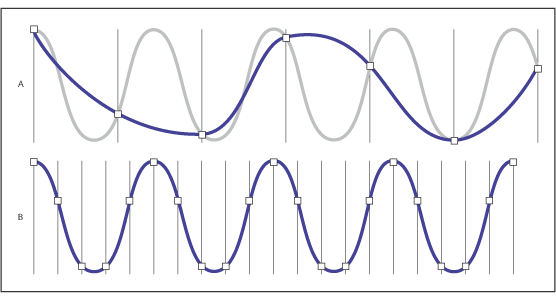
For over a century, humans have been using analog devices (ranging from wax cylinders to magnetic tapes) to record sound waves. As with video, digital audio recordings are all the rage today. Because a digital recording can only contain specific values, it can only approximate a continuous wave of sound; a digital recording device must “sample” a sound many times per second; the more samples per second, the more closely the recording can approximate the live sound (although a digital approximation of a “wave” actually looks more like the stairs on an Aztec pyramid). The number of samples per second is called the sampling rate. As you might expect, a higher sampling rate provides better recording quality. CD audio typically has a sampling rate of 44.1 kHz — that’s 44,100 samples per second — and most digital camcorders can record at a sampling rate of 48kHz. You will work with sampling rate when you adjust the settings on your camcorder, import audio into your computer, and export movie projects when they’re done.








